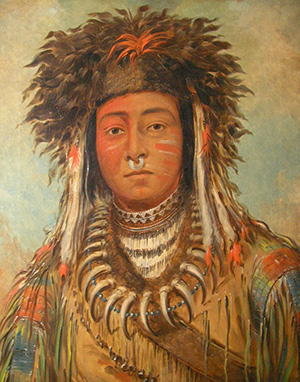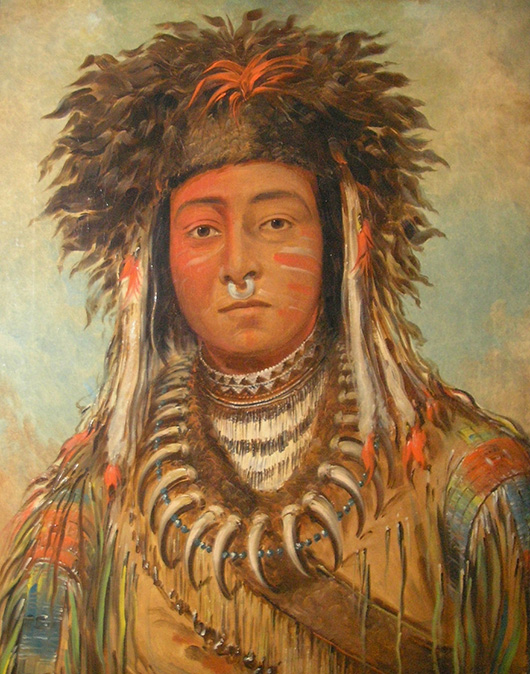
Scientists from the Karl May Museum in the eastern town of Radebeul near Dresden will soon begin an investigation to shed light on the provenance of one of 17 scalps in its collections, a museum spokeswoman said.
The work will be conducted “in close cooperation” with members of the Sault Ste. Marie Tribe of Chippewa Indians, who say the scalp is the ancestral remains of a mid-19th century Ojibwa.
“The results of this research are going to be the basis to examine potential claims for repatriation,” Claudia Kaulfuss, the museum’s managing director, said in a statement.
“In respect for, and in order to protect the collective feelings of the Chippewa Indians, we are going to conduct our joint research work on the scalp (with the) highest possible scientific accuracy,” she added.
The private museum opened in 1928 and is dedicated to the works of wildly popular German writer Karl May, who died in 1912, and the cultural heritage of American Indians.
His Wild West adventure novels about fictional characters such as Winnetou and Old Shatterhand sold millions and have been translated into about 40 languages, the museum website says.
The museum acquired the scalp via Patty Frank, an Austrian circus artist who traveled and collected items from American Indian culture and co-founded the museum with May’s widow, Clara.
But in March it received a letter and email from Cecil Pavlat, the repatriation specialist of the Sault Ste. Marie Tribe of Chippewa Indians in Michigan, calling for the scalp’s release and repatriation, the museum said.
Pavlat then visited the museum, whose collections include artifacts such as moccasins and totem poles, and met members of its board and Kaulfuss, spokeswoman Anne Barnitzke told AFP.
In June, both parties signed a letter of understanding.
Barnitzke said it was the first repatriation claim for a scalp in Germany that had been made public and noted how sensitive the matter was.
Pavlat’s claim is based on a caption for a photo of the scalp in a story written by Frank as part of a collection of texts published in a book in 1929, she said.
In the story, Frank writes about how he acquired his first scalp in exchange for $100 and three bottles of liquor, in a style that is a mixture of reality and fantasy.
It has also not been verified who wrote the photo caption, Barnitzke said.
“Therefore it’s not really clear if the story he tells is real,” she said.
Barnitzke said the timeframe for the research was likely to be years.
ADDITIONAL IMAGE OF NOTE


